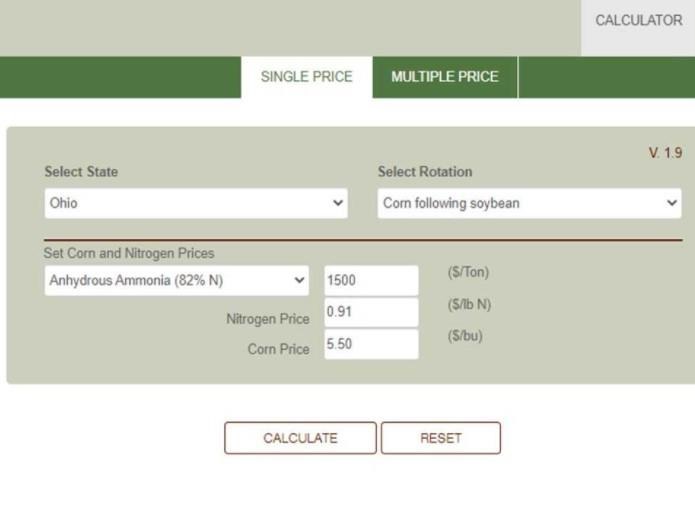By Eric Richer
Throughout this winter meeting season, fertilizer has been a hot topic. Generally, the discussion has been around nitrogen price and availability. Most of us have little to no influence on price or availability, but as a farmer, you decide your corn (and wheat) nitrogen rates, assuming you can get the nitrogen product you want. Your corn nitrogen rate could likely cost $100 per acre more in 2022 as compared to the year prior and nitrogen will probably surpass seed as the most expensive variable cost per acre this year. As such, it is important to note that the most recent revision (2020) of the Tri-State Fertilizer Recommendations for Corn, Soybean, Wheat and Alfalfa moved from nitrogen rate recommendations based on yield--from the original ‘Tri-States’--to a nitrogen rate based on maximum profitability or a maximum return to nitrogen (MRTN) rate. Sometimes the maximum return to nitrogen rate is referred to as the Economic Optimum Nitrogen Rate (EONR).
In the Corn Belt, the corn nitrogen rate calculator has been developed to generate these economic optimum rates. The purpose of this article is to help you understand what the corn nitrogen rate calculator is and how to use it. You can find the calculator at http://cnrc.agron.iastate.edu/ The calculator utilizes yield and rate data from on-farm and small plot research trials in Illinois, Indiana, Iowa, Michigan, Minnesota, Ohio and Wisconsin. The Ohio recommendations are based on nearly 300 corn nitrogen rate trials in the state. After selecting your state, you will need to select the crop rotation. See Figure 1. The third input is the source of nitrogen you will use and the price per ton you expect to pay. The final input is the price per bushel of corn at which you expect to sell your corn. Watch this short video to see how to use the Corn Nitrogen Rate Calculator.
